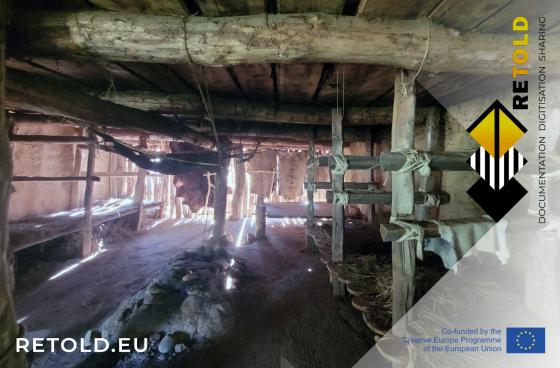RETOLD: Case study with AOZA, what issues did they face practically, how could they be addressed?

During the RETOLD conference at Steinzeitpark Dithmarschen (September 2023), XYZ Technical Art Services as part of RETOLD partner Nuwa Digital Ltd continued their series of photogrammetry training sessions for museum partners who want to digitally capture their museum inventory.
During the workshop, volunteers and museum staff gained hands-on experience of taking photos suitable for photogrammetry. These photos are then processed in commercial or open-source stitching software, which “reads” the visual features in the photos and reconstructs the camera angles from which the photos were taken. The resulting point cloud can then be further processed into a textured 3D mesh.
The workshop participants practically explored some of the challenges faced most frequently in creating 3D models of the objects typical in open-air museums:
- Creating photogrammetry of very complex structures with lots of detail. From mesolithic shelters to 2-storey farm houses, traditional buildings and archaeological reconstructions rarely have straight edges and smooth surfaces. To make sure that the 3D software recognises every feature, it is important to take between 500 and 800 photos of the buildings, from different angles. Markers are often placed along the entrances of buildings to help the software distinguish the interior and exterior of the building.
- Taking photos in low lighting conditions of objects with monochrome surfaces. Lighting in prehistoric and historical buildings can pose a challenge for photo cameras - and everything is in shades of brown! For photogrammetry, sharp photos are needed, rich in detail and low in noise such as grain or camera shake. To help light the interior of buildings, LED panels are particularly useful, as they give an even light, can be colour-controlled and can be battery-powered, which works well on more spread-out museum properties.
- Choosing the most suitable processing software and licensing model. Larger museums can gain access to educational or public licenses to commercial software, in smaller museums, individuals may choose to access it on private accounts. As an alternative, open-source or free software is also available, but may not be as easy to use.
It is important to plan this together with the staff or volunteers who will be digitising the objects. Equally important is documenting the process, so that the work can be shared.
We are looking forward to seeing the results of our RETOLD partners’ work - watch this space!
See some examples from the workshop on XYZ’s Sketchfab page: https://skfb.ly/oOnKE
When discussing photogrammetry, we also examined other aspects critical to digitization, such as equipping museum staff with training in Documentation Instruments & Strategies, alongside Immersive Media & 3D Storytelling. A particular emphasis was placed on 2D media, including still photography. Still images provide an efficient way to document stationary subjects, such as tools, environments, or participants in various processes. Within the museum sphere, these images support a range of objectives, from artifact preservation to educational initiatives and community outreach. Moreover, mastering photography and videography is key to producing 3D models using photogrammetry methods.
The training also addressed the production of documentary videos as a means of craft documentation and outreach. For the RETOLD project, 5-15 minute documentary videos were identified as the most appropriate format for documenting crafts. This format aligns well with the interactive nature of open-air museums, where exhibits often incorporate living history elements, natural settings, and live demonstrations. The feedback and needs collected during the project contributed to the White Book on digitization. Learn more at 2D Media: Photography and 2D Media: Video.
